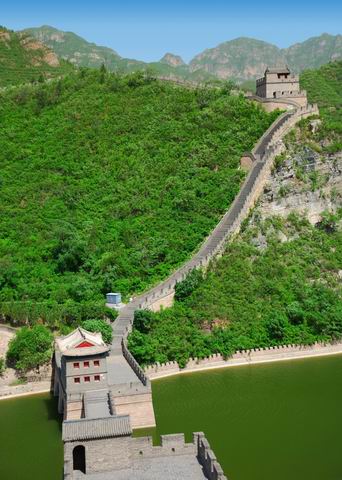
Great Wall of China was listed as an UNESCO site in 1987. This winding pathway over mountain, plateaus, grasslands and deserts is one of the most fascinating man made structure in human history. Its very breadth – 8,851.8 kilometers (5,500 miles) is unimaginable. Records of it go back to 2000 years. While some of the sections are in derelict conditions others are well preserved. Some of the most scenic landscape can be viewed from its upper reaches. One of the interesting Great Wall of China Facts is that it was built by the laborers, farmers, and soldiers in China and continued from the Warring States Period to the to Ming Dynasty. The wall starts from Hushan in Liaoning and ends in Jiayuguan Pass in Gansu in the western zone. It passes through nine provinces namely the Liaoning, Hebei, Beijing, Tianjin, Shanxi, Shaanxi, Inner Mongolia, Ningxia and Gansu. According to Chinese history 20 or more dynasties added to the Great Walls. Initially it was under the military and access to it was tough by tourists. Now most of the sections have been opened to visitors.
When going through your Great Wall of China Facts you will find that the most popular of these area is the Badaling area. Even Mutianyu is known for its magnificent sceneries and landscape while if you are wilderness freak then Jinshanling and Simatai are a must see. Other than these The extreme Eastern and the Western wall constructed during the Ming dynasty also attracts tourists in hordes. Jiankou Great Wall is the most dangerous of these walls again constructed by the Ming Dynasty. The earliest of the walls could be found in the Chu state and was constructed around 476 BC – 221 BC. The highest part of the wall stands at an elevation of 2,000m while the wall which has witnessed the maximum number of wars is the Zhangjiakou City region. The Great Wall is the longest man made feature in the world.

Some other Great Wall of China Facts :
Who was the original builder of Great Wall of China? There are various theories regarding this.While some say it is the Emperor Qin Shihuang others points out that it was the common laborers and farmers who constructed it. In the Warring States Periods (476 BC – 221) the emperor began to built walls around his region to protect the city against nomadic tribes. The first area to be walled was Chu and then the region of Qi, Yan, Wei, Zhao and Qin was later walled. In those days it was called Wan Li Chang Cheng which meant in Chinese “The Long Wall”.Many commoners and laborers died while making the wall due to the nature of the work and the time constraint of the work. The subsequent dynasties that came in the later years rebuilt some portion and added to the already existing wall. The wall that was constructed during the Han dynasty in 206 BC is the longest. Astronauts have pointed out that it is the only man made structure that can be viewed from space. However this is just a myth and little truth in the matter. It was an example by which people referred to its vastness.

Ming dynasty and the Great Wall of China
The Ming dynasty failed to prove their stronghold over the Mongols and the Manchurian region. They knew that these nomadic tribes would attack time and again. To keep the enemy at bay they added walls to fortify the city. The construction of the Ming Dynasty was of superior type than the Qin dynasty. They used bricks and stone. They also constructed the Liaodong Wall which sheltered the agricultural lands of the dynasty.The Great wall was helpful in saving the city from the onslaught of the Manchus but finally they were able to cross the wall.